The NVIDIA GeForce RTX 2070 Super & RTX 2060 Super Review: Smaller Numbers, Bigger Performance
by Ryan Smith on July 2, 2019 9:00 AM EST- Posted in
- GPUs
- GeForce
- NVIDIA
- Turing
- GeForce RTX
Meet the GeForce RTX 2070 Super & RTX 2060 Super
Taking a closer look at the RTX 2070 Super & RTX 2060 Super Founders Edition cards, there aren’t too many surprises to be found. Since we’re dealing with a mid-generation kicker here, NVIDIA has opted to stick with their original RTX 20 series reference designs for the new cards, rather than design wholly new boards. This has allowed them to get the new cards out relatively quickly, and to be honest there’s not a whole lot NVIDIA could do here that wouldn’t be superficial. As a result, the RTX 2070 Super and RTX 2060 Super are more or less identical to the RTX 2080 and RTX 2060 respectively.
| GeForce RTX 20 Series Card Compariaon | ||||||
| RTX 2070 Super Founders Edition |
RTX 2070 Super (Reference Specs) |
RTX 2060 Super Founders Edition |
RTX 2060 Super (Reference Specs) |
|||
| Base Clock | 1605MHz | 1605MHz | 1470MHz | 1470MHz | ||
| Boost Clock | 1770MHz | 1770MHz | 1650MHz | 1650MHz | ||
| Memory Clock | 14Gbps GDDR6 | 14Gbps GDDR6 | 14Gbps GDDR6 | 14Gbps GDDR6 | ||
| VRAM | 8GB | 8GB | 8GB | 8GB | ||
| TDP | 215W | 215W | 175W | 175W | ||
| Length | 10.5-inches | N/A | 9.0-inches | N/A | ||
| Width | Dual Slot | N/A | Dual Slot | N/A | ||
| Cooler Type | Open Air (2x Axial Fans) |
N/A | Open Air (2x Axial Fans) |
N/A | ||
| Price | $499 | $499 | $399 | $399 | ||
As I noted earlier, the Founders Edition cards themselves are now purely reference cards. NVIDIA isn’t doing factory overclocks this time around – the high reference clock speeds making that process a bit harder – so these cards are very straightforward examples of what the RTX 2070 Super and RTX 2060 Super can deliver in terms of performance. It also means that these cards no longer carry a price premium, with NVIDIA selling them at the $499 and $399 MSRPs respectively.
Starting with the RTX 2070 Super then, possibly the only material change is quite literally in the materials. NVIDIA has taken the 2080 reference design and given the center segment of shroud a reflective coating. This, along with the Super branding, are the only two visually distinctive changes from the RTX 2080 reference design. For better or worse, the reflective section is every bit the fingerprint magnet that you probably expect, so thankfully most people aren’t handling their video cards as much as hardware reviewers are.
In terms of cooling then, this means the RTX 2070 Super gets the RTX 2080’s cooler as well. At a high level this is a dual axial open air cooler, with NVIDIA sticking to this design after first introducing it last year. The open air cooler helps NVIDIA keep their load noise levels down, though idle noise levels on all of the RTX 20 series reference cards has been mediocre, and the new Super cards are no different. The fact that this reference design isn’t a blower means that the RTX 2070 Super isn’t fully self-exhausting, relying on the computer chassis itself to help move hot air away from the card. For most builders this isn’t an issue, but if you’re building a compact system or a system with limited airflow, you’ll want to make sure your system can handle the heat from a 215W video card.
Under the hood, the RTX 2070 Super inherits the RTX 2080’s heatsink design, with a large aluminum heatsink running the full length of the card. Deeper still, the heatsink is connected to the TU104 GPU with a vapor chamber, to help move heat away from the GPU more efficiently. Overall the RTX 2070 Super has the same 215W TDP as the RTX 2080, so it behaves virtually identically to the latter card. Which is to say that it has no problem keeping its cool.
Since this card is needed for further testing I haven’t shucked the card down to its PCB, but according to NVIDIA the power delivery system is also identical to the RTX 2080. In this respective NVIDIA’s reference designs are solid, and while they won’t be enough for hardcore overclockers, it’s more than sufficient for the kind of overclocking that can be done with the reference cooler. Of particular note, the maximum power target for the card is +20%, which means it can have its TDP increased to 258W. Accordingly, the card is fed by the same 6pin + 8pin power system as on the RTX 2080, more than guaranteeing the card can be fed up to its power target limit.
Finally, for display I/O, the card gets the continuing NVIDIA high-end standard of 3x DisplayPort 1.4, 1x HDMI 2.0b, and 1x VirtualLink port (DP video + USB data + 30W USB power).
GeForce RTX 2060 Super
Shifting gears, for building the RTX 2060 Super NVIDIA has gone the opposite direction, using the RTX 2060 reference design as the base. The 2060 itself wasn’t all that different from the 2080 – and the same holds for its Super variant – but there are a few notable distinctions from the newly minted RTX 2070 Super.
In terms of overall design, the RTX 2060 Super Founders Edition card retains the same design aesthetic – reflective bits and all – but it comes in a smaller package. Overall the card is just 9 inches long, which is 1.5 inches shorter than the RTX 2070 Super. The cooling system has also been simplified a bit – mostly forgoing the vapor chamber – though it still retains the card’s full-body heatsink and dual fan open air cooler.
With a 175W TDP, the card relies on a single 8pin PCIe power connection at the rear of the card for the extra power it needs. Overclockers meanwhile will be able to pump up the power target by 22%, allowing the card’s TDP to be raised to a maximum of 213W.
Outside of its smaller stature, the other big departure for the RTX 2060 Super from its more powerful sibling is in the display I/O configuration. As with the regular RTX 2060, the Super card drops the 3rd DisplayPort for a DL-DVI-D port, giving the card a final tally of 2x DisplayPort 1.4, 1x HDMI 2.0b, 1x DL-DVI-D, and a sole VirtualLink port.


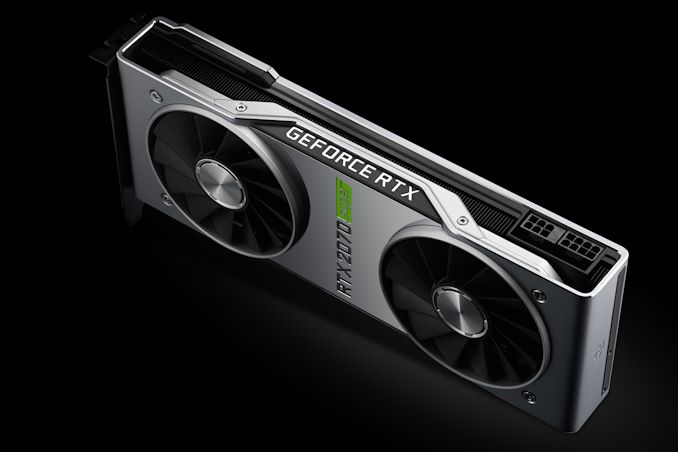
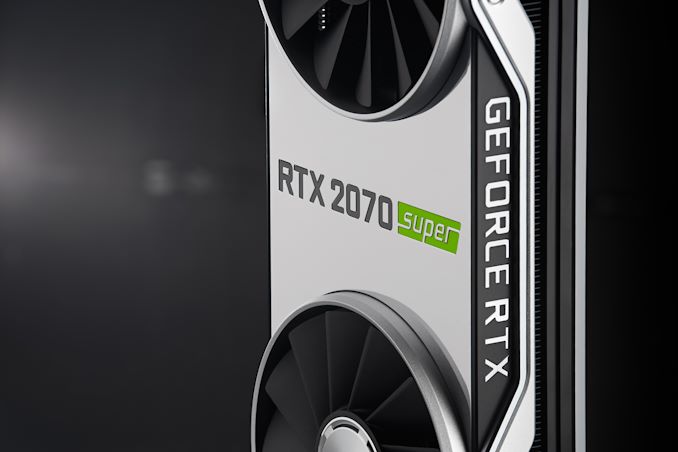
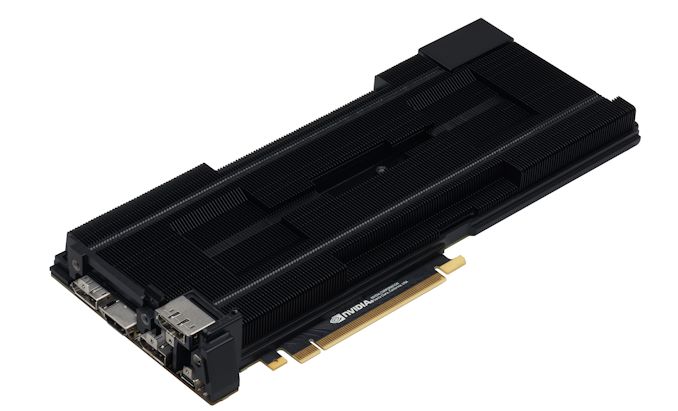

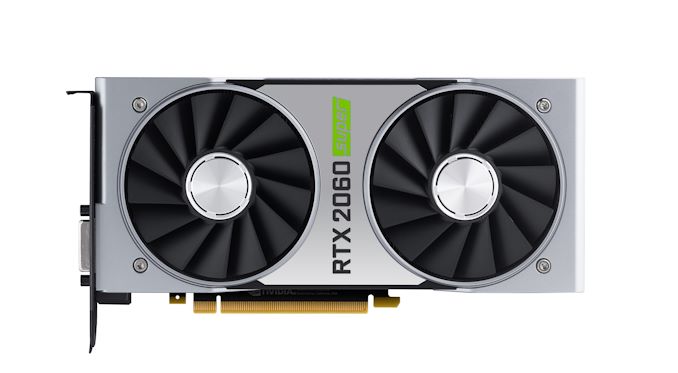
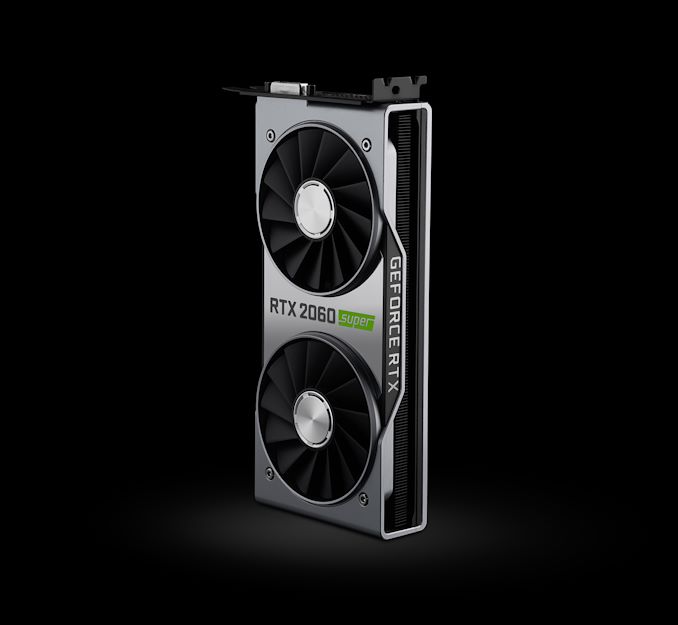









281 Comments
View All Comments
Korguz - Saturday, July 6, 2019 - link
everything thing yojimbo says is fact ?? yea right... thats a laughKevin G - Wednesday, July 3, 2019 - link
Umm... the TU102 dies is 754 mm^2. That is highend fair enough but it is near the limit with only the 818 mm^2 of the GV100 being larger.For consumer parts though? nVidia has routinely used chips larger than 500 mm^2 for the high end products but now a chip that large is being fitted into the RTX 2070 Super. That is still a very big chip that is difficult to yield fully functional units.
As prices for new process nodes goes up, chiplets do offer start to offer advantages in prices as they don't have to be manufactured on cutting edge nodes: if moving 5 nm in the future is not immediately cost effective, wait it out and simply add more 7 nm chiplets for a product refresh. The big advantage new nodes will be bringing is lower power consumption which limits pretty much everything. However, scaling back on clocks and voltage does permit significant power reductions and thus more dies for a given power budget.
eastcoast_pete - Tuesday, July 2, 2019 - link
The big (potential) upside of chiplets is, of course, the ability to make cards of various capabilities simply by connecting more chiplets to the interconnect. Also, there is an inherent upside to making several, smaller building blocks (chiplets) than one large die: you don't have to throw an entire huge die with many billions of transistors out just because of one or two significant defects. Much cheaper. The big challenge is the interconnect fabric: whoever is the first to get that right has a huge advantage.Without any insider knowledge of what's going on at NVIDIA, I would be amazed if they aren't working on their own interconnect and chiplet approach with great intensity.
eva02langley - Tuesday, July 2, 2019 - link
AMD is right now on the third iteration of Infinity Fabric. It is obvious that it is coming in the near future.Threska - Tuesday, July 2, 2019 - link
I'd say both Intel and Nvidia because all three are facing the same challenges as things get smaller.Yojimbo - Wednesday, July 3, 2019 - link
You say much cheaper.. the dies are cheaper, yes. But I don't believe the entire package is cheaper. Not currently, anyway, and they seemingly won't be cheaper if they are build on a silicon interposer so they must be built on other substrate.NVIDIA are working on their own interconnect and chiplet and have been for over 5 years or so, just like everyone else. That doesn't mean they are going to put it on a consumer GPU any time soon. You need the die costs to be pretty high, the interconnect to be pretty energy efficient, and the substrate cost to be low for it to make sense to add such complexity to something that could otherwise be made with one die.
soliloquist - Tuesday, July 2, 2019 - link
Nvidia lowering prices to steal AMD's thunder at launch is nothing new.But I think that it is telling that Nvidia had to crank up TDP and is willing to bundle games to do it. Time will tell exactly how these cards stack up, but it seems very clear that AMD has put the screws to Nvidia to produce more value in the market.
Meteor2 - Saturday, July 6, 2019 - link
Yes, AMD's main achievement is keeping Nvidia honest. But only just.Maxiking - Tuesday, July 2, 2019 - link
RIP AMD again.SD777 - Tuesday, July 2, 2019 - link
Why didn't the article include the specs/comps for the 2080ti? I would have liked to see the 2080ti on those charts so I could compare it. Might have been nice to include some of the 10xx generation just for comparison, but I can understand why those wouldn't be relevant.